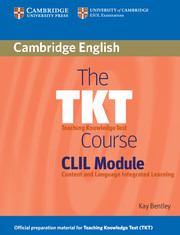Unit 12 - Scaffolding content and language learning
Published online by Cambridge University Press: 27 September 2023
Summary
What is scaffolding?
Scaffolding is the steps teachers take to support learners so that they can understand new content and develop new skills. Later, learners can use the new learning in different contexts without the support of scaffolding. Scaffolding is temporary support to help learners do things now as well as in the future. Vygotsky wrote that what learners can do today with support, they can do alone tomorrow (quoted in Gibbons, 2008). Scaffolding can be provided for listening, speaking, reading and writing tasks in all curricular subjects and it can be used to help learners form ideas and learn language. Some learners need more support than others and some need to be supported for longer than others. Often learners find they need support in one or two curricular subjects but not in others. For example, some learners may need many forms of scaffolding for history and geography lessons but fewer for maths and science. Others may need more support in science subjects and less in IT.
Key concepts
How can we scaffold learning?
There are many different ways teachers can scaffold learning so that learners feel successful when doing tasks. The kind of support we provide is very important for the outcome of the tasks. One way to scaffold learning is to carefully consider the language we use. Other examples of scaffolding are:
creating interest
breaking down tasks into small steps
providing before, during and after task support
using visuals and realia
demonstrating tasks
using word banks, glossaries, sentence substitution tables, writing frames
using model texts for production of language
providing constructive feedback.
We need to build on what learners already know about the subject and build on what language they already know. Then we need to support learners to achieve the next step in understanding subject content before they can work on their own. More scaffolding is needed when learners have to understand subjects which are new and unfamiliar. Scaffolding is also needed to create classrooms where there is interaction and collaboration. For example, we can use visual organisers as speaking frames so that learners can work together to prepare explanations, comparisons or descriptions before presenting their ideas to the class.
- Type
- Chapter
- Information
- The TKT Course CLIL Module , pp. 69 - 73Publisher: Cambridge University PressPrint publication year: 2010



